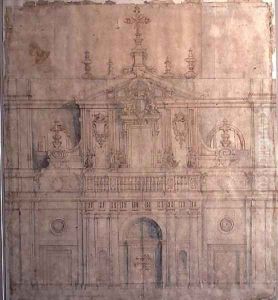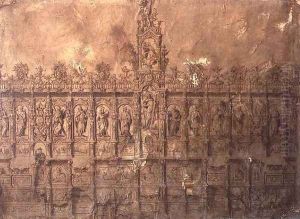Alberto de Churriguera Paintings
Alberto de Churriguera was a Spanish architect and sculptor, born in 1676 in Madrid, Spain. He was part of the Churriguera family, which included several notable architects and artists during the late 17th and early 18th centuries. The Churriguera family is particularly associated with the Spanish Baroque style of architecture and sculpture known as Churrigueresque, characterized by its elaborate and extravagant decorative elements. Although the style is named after the family, it was actually Alberto's brother, José Benito de Churriguera, who is most often credited with popularizing the Churrigueresque style.
Alberto de Churriguera's contributions to architecture and sculpture were significant in their own right, although less documented and celebrated than those of his brother. He worked primarily in Spain, contributing to the design and construction of religious and civic buildings. One of the notable works attributed to Alberto is the main façade of the Cathedral of Salamanca, which he is believed to have completed after the death of his brother José in 1725. This façade is considered a masterpiece of the Churrigueresque style, showcasing the elaborate ornamentation and dynamic forms characteristic of the movement.
Throughout his career, Alberto de Churriguera collaborated with other members of his family and was involved in several important architectural projects. He also influenced the work of other architects and sculptors of the time, contributing to the spread of the Churrigueresque style across Spain and its colonies. Despite the overshadowing fame of his brother José, Alberto's work remains a testament to the family's legacy in the Spanish Baroque period.
Alberto de Churriguera passed away in 1750. While his individual achievements may not be as well-documented as those of other family members, his contributions to the Churrigueresque style and Spanish Baroque architecture continue to be recognized by art historians and enthusiasts of the period.

